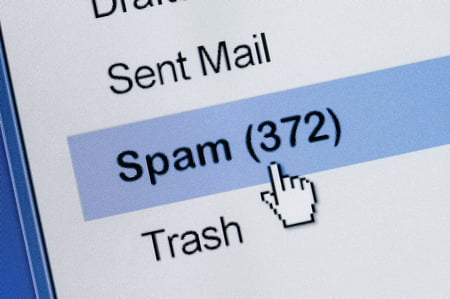With all that being said, let’s explore some ways you can leverage email to gain quality inbound links.
How to Get High-Quality Backlinks With Emails
Step 1: Choose Your Share-Worthy Content
Your email campaign will require something of value to offer a potential linker. Use amazing pieces of content like your super in-depth pillar pages, top-performing articles, a helpful video, new infographics, or anything really!
Start off by looking at your proudest content— the pieces which have received a lot of feedback and traffic. Confirm their popularity with SEMRush, narrowing your list down to the ones with the highest number of inbound links.
Decide to Go Broad or Get Specific
Once you have some content you’d be confident sending to potential linkers, look at how each piece addresses its topic. Is it broad, like an article explaining the basics of your topic, or is it specific?
For example, if your business sells sheds, do you want to email a generic infographic about different shed styles— or, do you want to hyper-focus on people who are considering converting their sheds into “man caves” with a slideshow of inspirational ideas?
If, after a lot of thought, you realize you need to create the right content for your plan, that’s okay! Make sure you crank out something you yourself would link to, or keep creating more content until it’s truly remarkable.

Step 2: Do Some Cherry-Picking on the SERPs
Now you have to find your targets, which you can do with a few strategic Google searches.
Open up an Excel or Sheets spreadsheet and make a column for Domain Name, URL, Contact Person Name, Contact Person Email/Phone, Date Contacted, and Notes.
Hop over to Google and start searching for related keywords by clicking on sites on page one and two of the SERPs. If you decided to focus on man cave shed ideas, look up keywords around designs, DIY inspiration, creative uses for sheds, etc.
Dig through each ranked page and look for a way to leverage it. If you think they might be interested in your content, add these ideas to your Notes tab with the site’s domain, exact URL, and contact method.
Remember, a generic email sent to a company’s “contact” email will likely be transported immediately to a spam folder or reviewed by someone who’s answering direct inquiries and doesn’t care about link building. Look for someone in marketing and send it directly to them!
Search a handful of keywords until you’ve compiled a list of maybe 25-50 probable contacts. Next, use SEMRush (or the MozBar plug-in while you’re on each website) to look up their individual domain authorities (DA), the individual page authority, and their number of backlinks, to help you narrow down your list. Aim for DAs higher or close to your website’s own score.
Again, it’s better to have a short, highly-qualified list of 25 really promising targets than 100 shot-in-the-dark prospects.
Make Friends with Your Competitors, When Appropriate
We understand that not all competitors are going to be thrilled about the idea of promoting you on their website, but supporting one another could be a mutual exchange, so try to leverage these competitive relationships whenever possible.
If your service complements theirs, instead of directly rivaling it, even better! For example, if you sell sheds and are sending out your man cave article, reach out to a bar installer who would be able to help them organize your clients’ liquor cabinets inside their caves. Get creative!
Step 3: Crafting Your Link-Building Email Template
Remember, even via email, you want to facilitate a human-to-human interaction with someone.
Here are a few ways to personalize your message:
- Address someone in particular. Find the person who wrote it and send the email directly to them, using their name in the message (psychologists argue this rapidly builds a connection). If you can’t find a name and would be forced to send to a generic email, cross it off your list.
- Expand on something you’ve learned from the article. Don’t just say you liked their article or website. Snooze. Pick out a particular point and be genuine. Give them an example of how it helped you. If you can’t pick out one thing you’ve learned for their content, cross it off your list.
- Don’t send your content right away. Preview the fact that you have something that they might find helpful, but don’t shove it in their face. Ask them if they want to see it to consider using or learning from it. That’ll at least get the conversation going and elicit that first reply.
Try something like this:
“Good morning, Gloria!
My name is Jenn, and I wanted to thank you for sharing all these incredible photos of the man cave shed conversion you did for your husband.
I’m so glad you recommended putting a big cork board behind the dart board. I would have nicked up the whole back wall!
One of my clients actually added a pool table inside their shed, and I don’t think they realized how much space those things take up. He actually wrote an article that includes all the measurements and techniques for getting it inside with the least hassle. Would you want to see it? It might be something that you could reference in your piece to or consider as your next upgrade!Let me know if you want me to send it over! Again, thanks for the advice.
Jenn”
- Expect to wait a little. Give your prospects a week before following up, and when you do, only follow up ONCE. If they aren’t interested and you keep harassing them, you will be that annoying, spammy marketer.
- If all else fails, pick up the phone. This article is all about how to use email to get backlinks, but email just doesn’t win with everyone. Try a similar approach to what you said in the email but make it more conversational. Actually talking to the person could be exactly what you need to make a connection.
Take Control of Your Rankings
Your search engine optimization team can’t neglect powerful backlink campaigns if you want your site to appear on page one of the search.
Although backlinks are an important ranking factor, there are a handful of other reasons why you may not be getting the organic traffic you desire.






